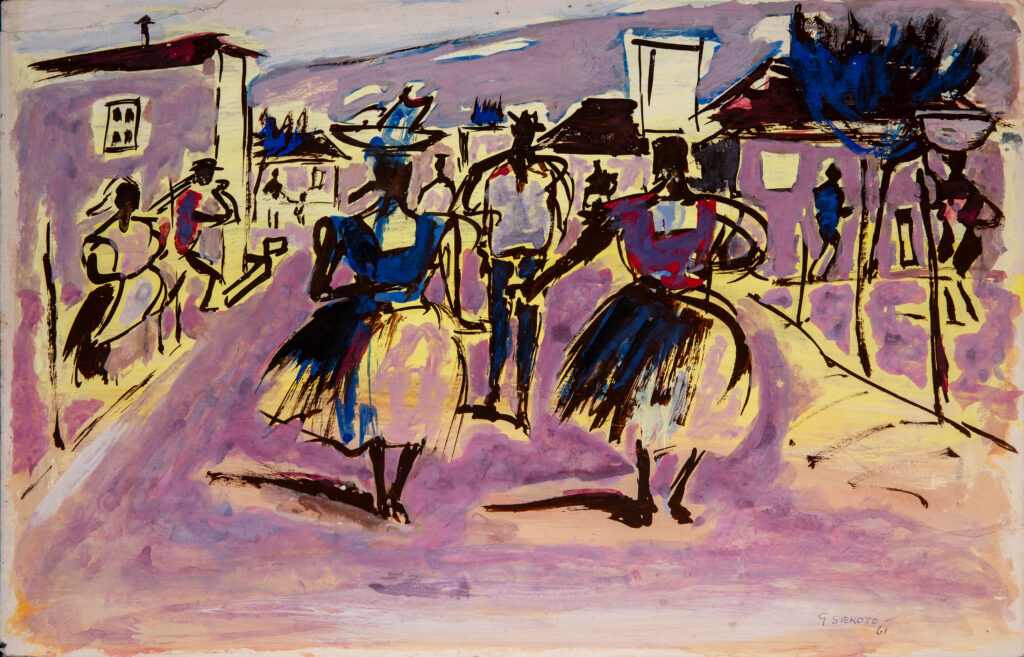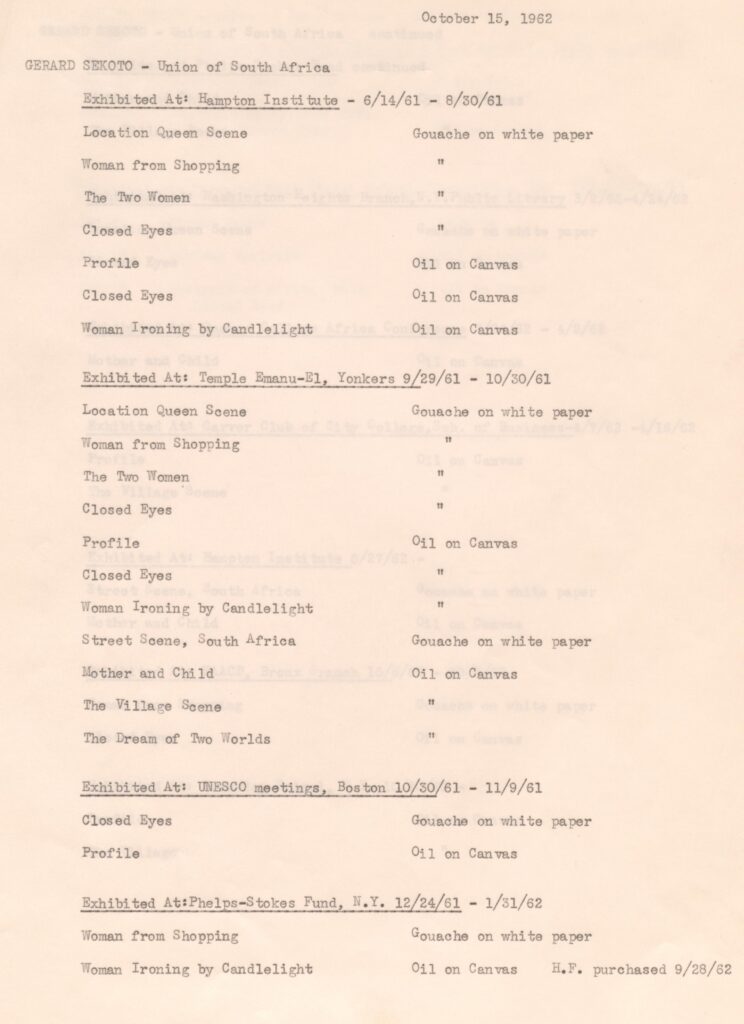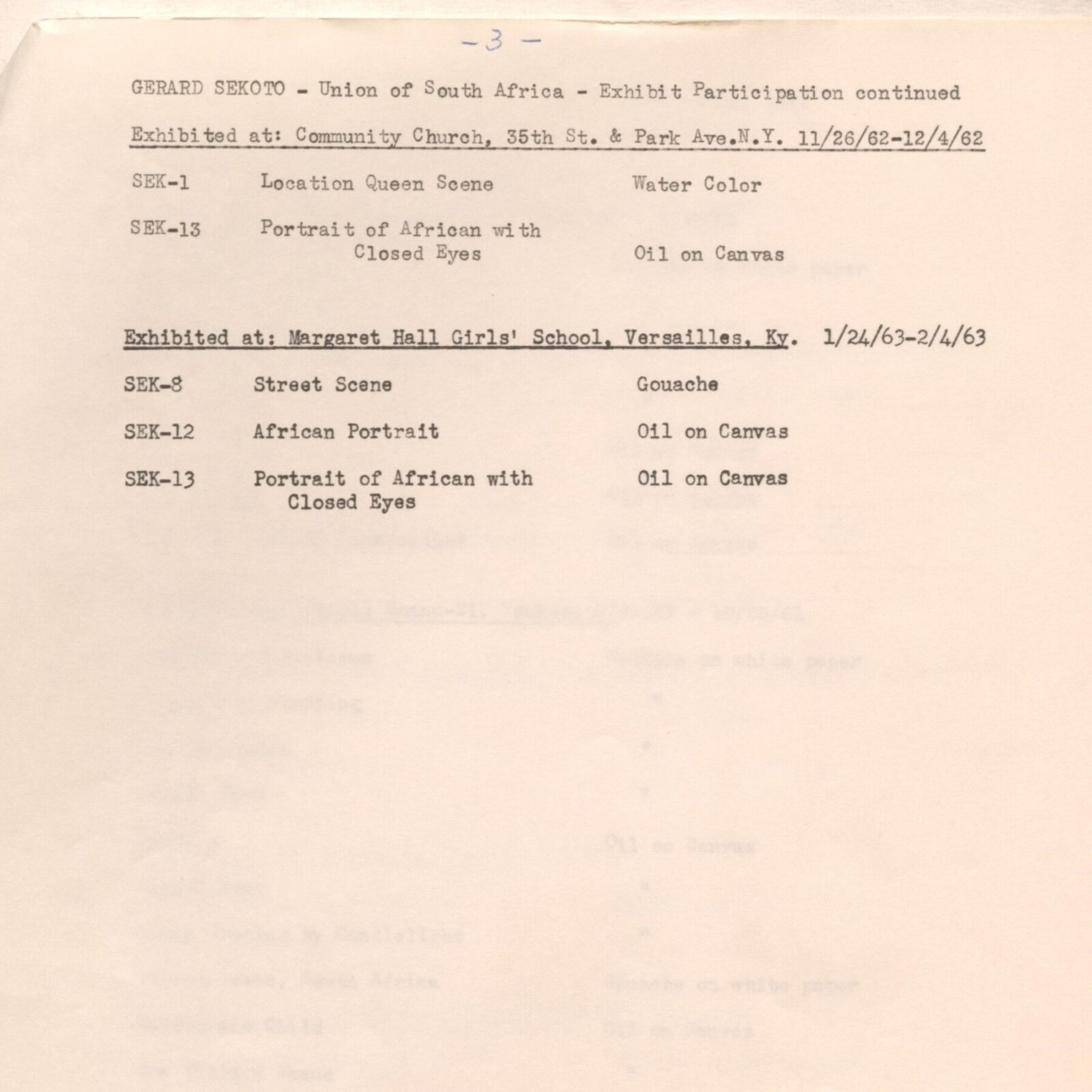
Gerard Sekoto
Gerard Sekoto (1913-1993) was born on a Lutheran Mission station in the Middleburg District of the Transvaal, which was once a province in South Africa. At the age of seven, Sekoto started to work with clay and began to draw on a slate board. Eventually, he would learn to use a pencil which he would use to draw his father’s patients. His interest in art continued into his time at college where he would draw his classmates.
Due to the unwillingness to accept black artists into South African art schools, Sekoto was never able to get a formal art education. Despite this he made strides to progress his artistic ability. For example, he learned how to use oil colors from a young white female artist. Because of the serious crime of a black man visiting a white woman, Sekoto would sneak to the woman’s art studio two or three times a week. Eventually, Sekoto took it upon himself to end these art lessons. According to him “should the law ever catch me here trying to be smart, then not a single person on earth could take its teeth away from my throat.”
Gerard Sekoto left Paris in 1947 never to return to South Africa. Sekoto saw Paris as the “Mecca” of the art world and as a place where he could have freedom of thought, something he lacked in South Africa.
Sekoto is considered a pioneer of urban black art and social realism. He was very well aware of South Africa’s social, political and racial differences and in fact chose to actively seek out these differences to paint. Sekoto was attracted to cities such as Johannesburg and Cape Town because they had and still have a diverse population. These cities also had less rigid barriers when it came to social, political, and racial differences.

As someone who expressed what he saw and felt through art, Sekoto had a way of viewing both the beauty and ugly in the everyday scenes around him. A great example of this is the painting, The Song of the Pick. In this painting, Sekoto captures the racial inequality of South Africa by painting a white foreman overseeing nine black workers. Although the foreman is in a position of power in terms of employment, his smaller frame puts him at a disadvantage compared to the larger frames of the workers. Sekoto paints all the workers with the same pose, a lunge position with their picks raised above their heads. The strength and repetition of the poses communicates the beauty of unity among black South African workers.
The Two Women

The painting, The Two Women, positions us in a busy street scene filled with hues of red, pink, and blue. The abstract figures around us are hastily drawn with quick strokes of dark brown paint. As we stand in the center of a broad street, we see two women walking with their backs facing us. In our line of vision, we also spot a taller man walking in the opposite direction of the women.
Sekoto created The Two Women while living in Paris. In Paris, he continued to create vibrant urban scenes from South Africa that featured black people. The location of The Two Women could be reminiscent of Sophiatown, a black neighborhood near Johannesburg. In 1939, Sekoto had moved to Sophiatown to “take part in the daily life of a big city and to see the human barriers”. Sophiatown was a diverse city. It had black and white residents and residents of Asian descent. Sekoto also noticed that Sophiatown contained different ethnic groups from various parts of Africa as well as many different Christian denominations.
According to Sekoto, “Tough, rough and squalid as the Sophiatown was, it opened to me for the first time in my life the joy of feeling no rigid barriers dividing people of different traditions and beliefs. I felt I was part of the whole, hence I could sing in bright colours – yellow, red, browns and blues – singing the sorrows, troubles and joys of those with whom I communicated.”
Unfortunately, Sophiatown’s colored population endured forced removal starting in 1955. Sophiatown would eventually be demolished and called Triomf meaning Triumph in Afrikaans. Years later, it would once again be renamed Sophiatown.


